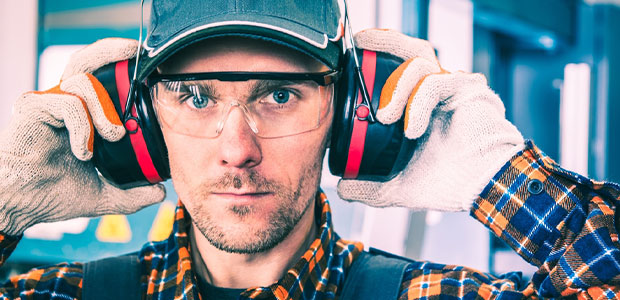
Study Finds More than One-Half of Workers Exposed to Noise do not Use Hearing Protection While on the Job
Non-use was highest among women, young workers and current smokers.
- By Shereen Hashem
- Oct 11, 2021
A new NIOSH study estimates that more than one-half of noise-exposed workers did not use hearing protection “always” or “usually” when exposed to hazardous occupational noise. A Hearing protection device (HPD) non-use was only measured in workers who reported exposure to noise on the job. The study was published online October 1, 2021 in the American Journal of Industrial Medicine. Around 22 million people in the U.S. are exposed to hazardous noise at work each year. Researchers found female workers, young workers (aged 18-25) and current smokers had a significantly higher prevalence of HPD non-use.
“Our findings regarding HPD non-use by gender and age group are consistent with previous studies,” said Elizabeth Masterson, PhD, research epidemiologist and study co-author. “However, no prior relationship between smoking and HPD non-use has been reported. Our study was the first to find a significant association between current smoking and HPD non-use.”
The study looked at 39,508 adult current workers from 2007 and 2014 National Interview Surveys. These surveys asked participants about their HPD use and occupational noise exposure within the past year. Out of the workers surveyed, 2,057 reported exposure to occupational noise during the previous 12 months in 2007 and 3,380 in 2014. Overall, between 2007 and 2014, the prevalence of HPD non-use did not change significantly.
Among all workers exposed to noise in 2014, researchers found the majority (53 percent) did not wear hearing protection consistently. Industries with the highest HPD non-use among noise-exposed workers included Accommodation and Food Services (90 percent), Health Care and Social Assistance (83 percent) and Education Services (82 percent). Additionally, some of the industries where noise is a well-recognized hazard, were found to have high prevalence of HPD non-use, including Agriculture, Forestry, Fishing and Hunting (74 percent) and Construction (52 percent).
“The prevalence of HPD non-use remains high. Increasing worker awareness and providing training about the importance of proper and consistent use of HPDs can protect workers from the effects of hazardous noise" said Dr. Masterson. "In addition, we need to overcome barriers to HPD use by ensuring that workers have HPDs that are comfortable and do not overprotect from noise so they can hear speech and other important workplace signals.”
For more information about noise and hearing loss prevention research visit the NIOSH website. Visit the Occupational Hearing Loss Surveillance webpage for industry sector-specific statistics on hearing loss, noise exposure and more information.
About the Author
Shereen Hashem is the Associate Content Editor for Occupational Health & Safety magazine.